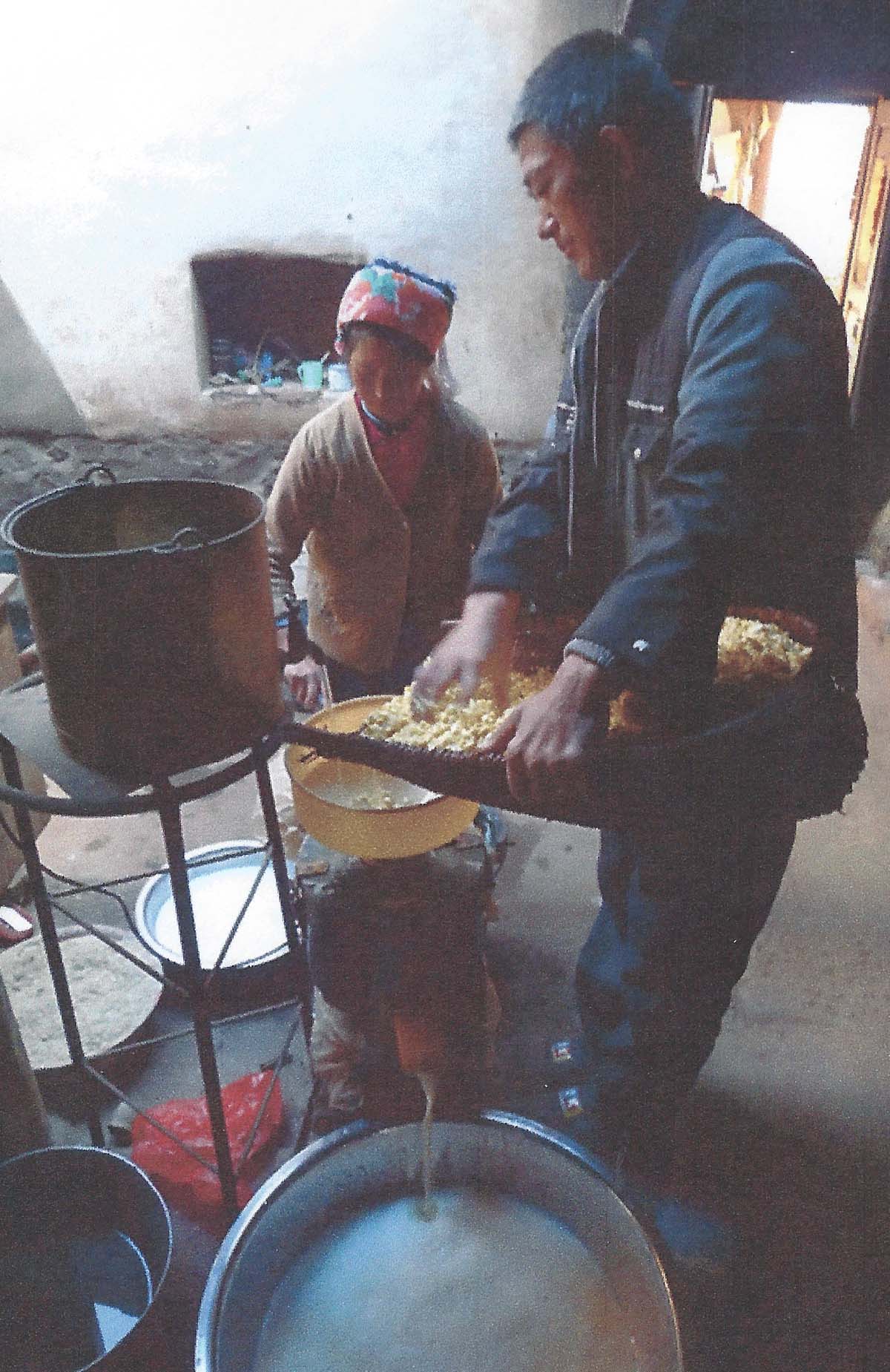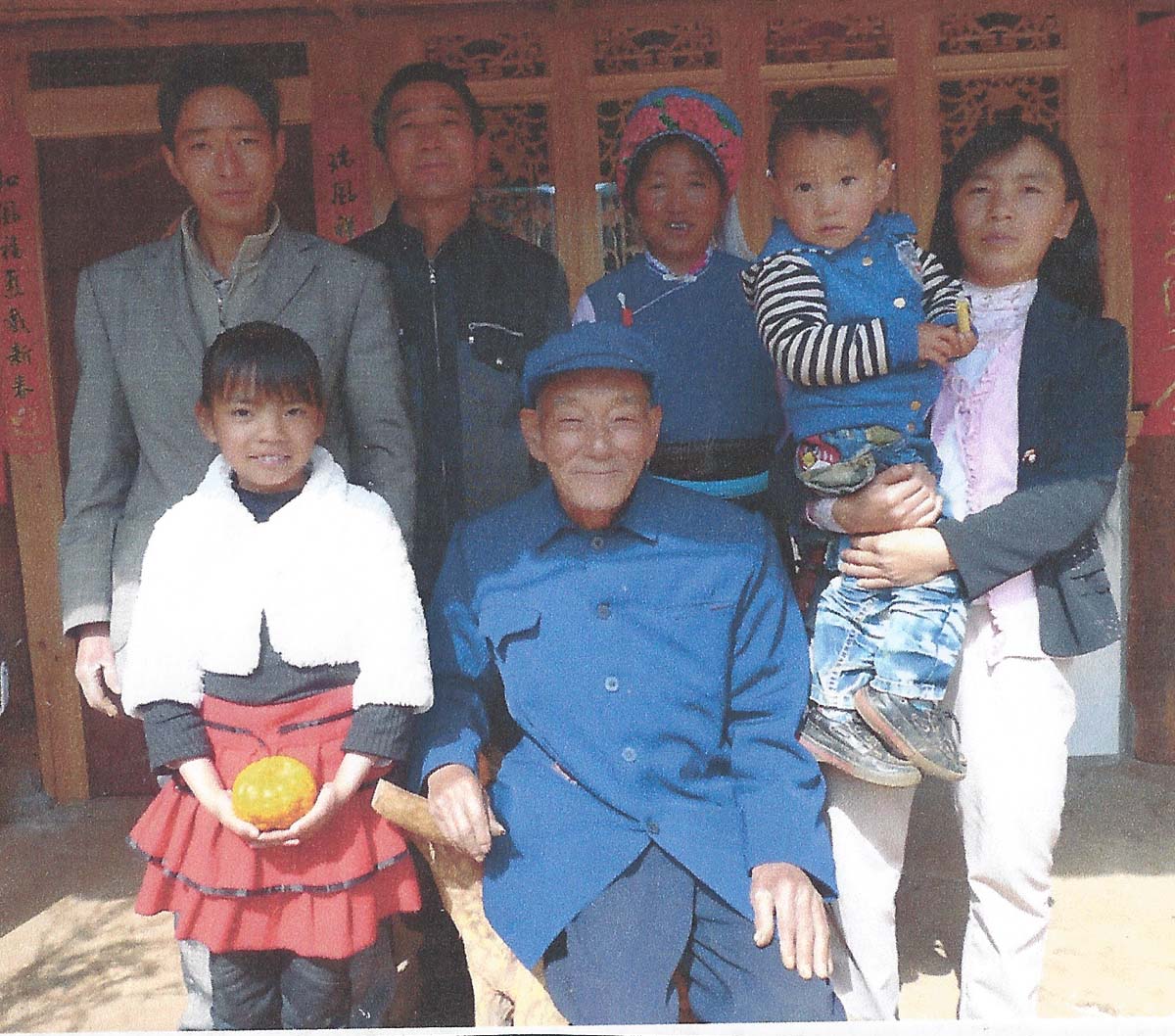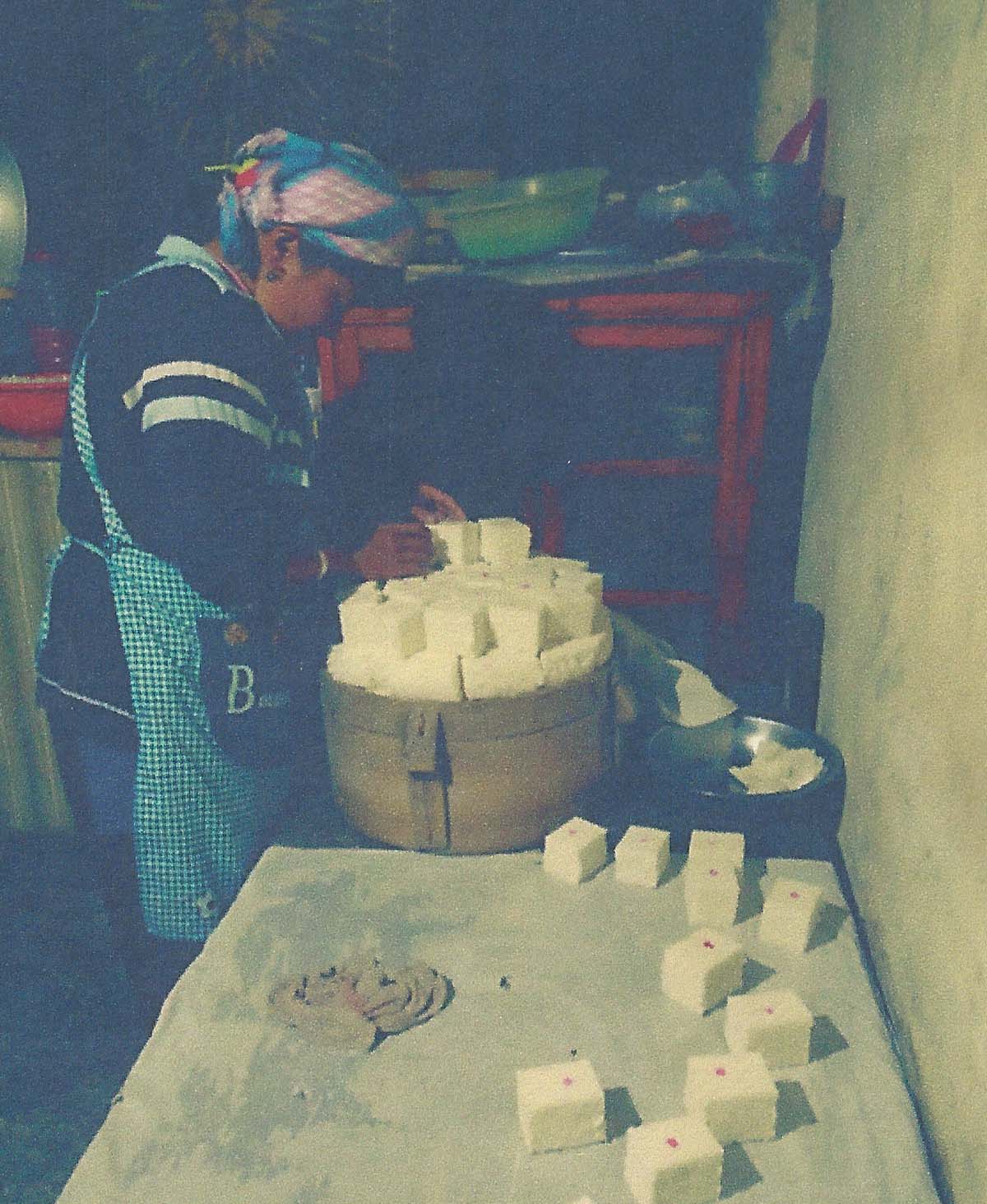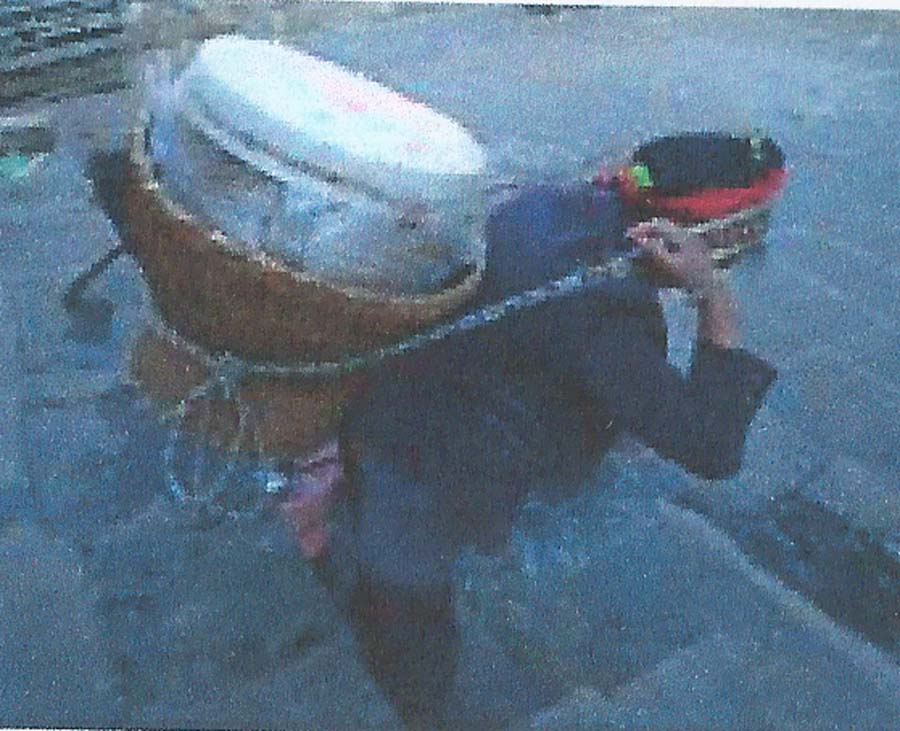
| What is Flavor and Fortune? |
| How do I subscribe? |
| How do I get past issues? |
| How do I advertise? |
| How do I contact the editor? |
Read 13204133 times
Connect me to:
| Home |
| Articles |
| Book reviews |
| Letters to the Editor |
| Newmans News and Notes |
| Recipes |
| Restaurant reviews |
| Article Index (all years, slow) |
| List of Article Years |
| Article Index (2026) |
| Article Index (last 2 years) |
| Things others say |
| Related Links |
| Log In... |
| Authors |
| Categories & Topics |
Dali Bean Curd and Steamed Cakes
| by Wang Si |
Chinese Ethnic Minorities and Their Foods
Winter Volume: 2013 Issue: 20(4) page(s): 5 - 7



 Dali is located in the Yunnan Province. It is one of the villages I visited, the Houshan Village, where I stayed for three days with a Bai minority family. I did visit another family in Zhoucheng Village, but first things first.
Dali is located in the Yunnan Province. It is one of the villages I visited, the Houshan Village, where I stayed for three days with a Bai minority family. I did visit another family in Zhoucheng Village, but first things first.
There are more than one million Bai people in Dali. The Bai family I visited in Huocheng were the Gongs. they live near the top of a mountain. My previous article was about their baked tea. This one discusses making and eating their doufu or bean curd. It concludes discussing beautifully decorated steamed rice cakes by the Li family; and that was in Zhoucheng Village.
My first hosts, Mr. Gong's son and daughter-in-law, did advise the night before I was to leave that to taste the doufu they planned to make the next morning I would need to rise very early. This was an exciting opportunity, I love bean curd and have never seen the entire process of making it, start to finish. Now I will have the chance to do so! There is an old saying in Yunnan, "there are three hardships in the world, these are going to school, moving cargo by horse, and grinding soybeans when making bean curd." This last item is there because those who make it must get up very, very early. My hostess told me one reason they must do so is that "it does take a long time when using a stone mill but now we have an electric grinder that is saving us lots of time, but we still get up very early."
I remember many years ago when I was little, my grandma used a stone mill to grind rice. This Gong household bought their electric grinder fifteen years ago. It uses 1500 watts of electricity, and has three apertures needing their attention. The top one is the hopper which gets filled with soybeans. The grinder separates them into soy milk and soybean residue. They come out separately from two openings at the grinderfs bottom.
TO MAKE BAI BEAN CURD
1) Soybeans are soaked overnight in cold water. Three kilos of soybeans makes ten kilos of bean curd.
2) The following morning the soybeans need to drain in a bamboo basket.
3) Next, they prepare the electric grinder with two big containers under the two bottom openings, one for the residue which they fill one-third full with clean water. On top of the hopper, they put a second bucket with a tap at the bottom and fill it with clean water, as well.
4) Next, they turn the power on and hold the bucket with one hand, the soybeans are put into the hopper with the other hand slowly and evenly. The other bucket is under the opening for the residue. It has a ladle to evenly stir it with the residue and the water spooning the residue into a basin, letting the soy milk flow out its other side.
5) The residue needs to go into the hopper more than once to extract as much soybean milk as possible, so they do it twice, then a third time without water extracting as much liquid as possible. They use the residue to feed their pigs and chickens.
6) Then they put most of the soy milk into a big wok, a small amount into a second wok. They do this slowly bringing both to the boil, not letting the liquid get too hot because if it does, the milk will burn.
7) After half an hour, they mix the remaining soy milk in the second wok with plaster, the proportion of plaster to soybeans is one to one and a half. Too much plaster flavors the bean curd negatively, less than the correct amount reduces the yield and allows the soy milk to get sour too quickly.
8) After half an hour, the soy milk is boiled, and they remove the foam from its surface. With this they can feed the pigs assuring no waste in the process.
9) Now, they move the pure soy milk to the second wok, do not stir it, and cover it with a lid. They put wet towels around the lid to keep air out, and let it rest for ninety minutes before removing the lid.
10) At this point, the soy milk is soft and getting solid. Sometimes, they stop the process at this point and eat some of it with sugar or soy sauce. They call this bean curd pudding. It is a traditional dim sum snack food. The rest of the solidifying soy milk is put into a flat-bottomed bamboo basket lined with wet cotton cloth.
11) Now, on the surface of this pudding, they put more wet cotton cloths, cover them with a piece of plastic wrap or a plastic cloth, and then put a piece of marble or another heavy object or flat weight on top to press out any remaining water.
12) After thirty minutes, the pudding is more solid and is smooth white doufu. At this point one can cut the squares. My hostess did so and they look like the ones for sale in the marketplace.
There are hundreds of recipes available to serve this food and the family advises their customers, should they ask. To them, I again say thank you for my lesson in how they make this most common Chinese food.
A couple of days later, I went to Zhoucheng Village and learned about another common Bai food, Steamed Rice Cake. There are many ways to make rice cakes in China with different ingredients, in different shapes, and with different tastes. The one seen in Zhoucheng Village is more beautiful than any I have ever seen before. It may not be the most popular, but it is one typical in the life of many Bai people. They serve it at ceremonies such as for the completion of a new house, or when attending a funeral.
These customs may come from their Han neighbors, and I say that because the local name is two common words in Mandarin, zheng andgao. Zheng means to steam, and gao means rice cake. Words with these pronunciations can mean high, rise, or increase, and this might explain why zheng gao is used for these beautiful cakes. In the olden days, every family in Dali made and served steamed rice cakes as needed or wanted. Villagers could also buy them from workshops that made them.
Li Weihua's family lives at 56 Dachong Road in Zhoucheng Village. His wife Dong Kunxu lives at number 44, and they have a daughter named Li Guiye and a son named Li Guichun. Their family has been making steamed rice cakes since Li Weihua's mother was young.
Mr. Li has two brothers, both in the fish business. He learned this traditional craft from his mother. In autumn and winter, from August through February on the Lunar Calendar, is the busiest season for making rice cakes. Rituals in life usually happen during these months. In the off season, only Li's wife stays at home. He does building work to earn more money. His son does business in Shangri-La all year-round while his daughter is a college student. She only comes home during vacations and has been helping her parents since she was young. She says the most difficult days are during Lunar December when many neighbors order rice cakes. They are extremely busy then and can use five hundred pounds of rice in a single day. They can have twenty steamers operational on these productive days and two steamers working all night long so they get little to no sleep.
This family makes two shapes and kinds of rice cakes, one round, the other chess-shaped. To do so, they use two different kinds of steamers. The wooden ones are used for whole rice cakes, the metal ones for the chess-shaped ones. The wooden steamers they use are about twenty inches in diameter and ten inches tall. The metal ones they use are five to ten inches larger in diameter and a few inches shorter than the wooden ones. The process and patterns of these two cakes are a little different.
MAKING BAI RICE CAKES
Begin making of rice cakes as follows:
1) Regular and glutinous rice are mixed in the proportion of 49 to 1. Seventy pounds of rice usually makes close to one hundred pounds of rice cake.
2) The rice is rinsed five or six times to be sure the final cakes come out very white. This must be done more quickly in summer to prevent the rice from spoiling, than at other seasons.
3) Washed rice is ground into rice flour, This family pays another workshop to finish theirs using an electric grinding machine as they do not own one.
4) Rice flour is put in a big container adding sugar, about one percent by weight.
5) Clean water is added and evenly mixed into the rice flour.
6) An iron web is put on top of a container, and one side of its wooden bar needs to be held and someone must rub the flour back and forth with the palm of one hand to make sure the cake will be exquisite. This familyfs iron web is made of four wooden bars around iron wire with thousands of tiny holes; it looks like a window screen.
7) Next they need to pound a half-pound cone-shaped brick of brown sugar using a stone mortar, and then use the same kind of iron web to strain the brown sugar and put it aside for later use.
8) The strained rice flour rests overnight so that it ferments a little. Early the next morning, usually before six, Mr. Lifs wife puts a piece of cotton cloth on a steamer basket preparing it for the cake. Now, they can make either kind of cake.
SHAPING BAI CHESS-BOARD RICE-CAKES:
A) Put a metal steamer on a piece of dry cloth, and the steamer rack covered with a wet cloth that fits it edge to edge.
B) Put the prepared rice flour on this cloth in the steamer making it flat, and remove excess flour.
C) Cut the flour cross-cut by cross-cut, and into even shapes.
D) Prepare a wok of boiling water and add it to the bottom part of the steamer, bringing it to the boil. Be prepared to keep it boiling for forty minutes.
E) Before it is finished, unfold a piece of cotton cloth on a bread board, wet it evenly, and prepare a wooden steamer basket.
F) When the cake is cooked, quickly use a chopstick with flower-carving at its end and dip and dye the top of every piece of rice cake, as desired.
G) Next, quickly turn the steamer basket upside down onto the covered board and remove the cloth from the cake, quickly separating and turning over every piece of rice cake.
H) When the steam stops, set all the cakes into the wooden steamer, usually about sixty pieces, and cover them with a piece of cloth. Now take a plastic cloth, and tie it around the steamer. The rice cake will be soft and a little sticky, taste sweet, and have a rice aroma. Each steamer of chess-shaped cakes weighs about twenty-five or more pounds; they are sold for fifty yuan.
PATTERNING BAI RICE-CAKES:
A) An empty wooden steamer is put on the wok and placed over boiling water and covered on the bottom with a thin layer of cooked rice to prevent the flour from sticking to the steamer.
B) More rice flour goes into the steamer on the cooked rice filling it two/fifths full. Then flatten the top of the rice flour, and cover this with half the brown sugar. Next put the same amount of rice flour on top of the brown sugar, and add another layer of brown sugar on top of this. The last layer of ground rice flour is put on top of the second layer of brown sugar. Make sure each layer, the top layer of rice flour included, is even and level.
C) Put a carved wooden board on the top of flour. This family uses one of several patterns, each for a different occasion, already prepared with dyed flour, usually red and green in appropriate places. This is brushed on smoothly; then they take away the wooden board.
D) Next, cover the steamer with a lid and a plastic cloth wrapped around to prevent air from escaping. The cake is ready after steaming for thirty to thirty-five minutes.
E) When cool, package the cake with plastic cloth.
The top of this whole cake is beautiful, the brown sugar melts in. It is shown on the last page of this article in the steamer and later being carried to a customer. One filled steamer can weigh one hundred and ten pounds and sell for one hundred yuan. Mr. Li tells me that people who have experience making them know the cake is nearly done when the steam gives off a rice fragrance. Finished cakes are white, soft, elastic, and with considerable rice fragrance.
According to local Bai customs, when a family completes a new house, or someone passes away, they invite many neighbors as guests asking them to come for three days. On these occasions, each of the hostfs lineal brothers or sons serves a steamer of rice cake along with other foods such as pork, chicken, other rice dishes, fruits, candies and so on. The rice cake is divided into equal pieces, and every guest brings one piece home to show that he or she had been invited to a feast and that they did share food and good will with the host family.
The above two items, the doufu or bean curd and the rice cake are two small parts of many of the traditional Bai foods. When one gets to know that people spend so much time and economics to prepare and serve such delicious high quality foods, there is no reason to waste any or consider eating them as a waste of time. That may be one reason people, myself included, prefer handmade to industrially manufactured food.
_____
Wang Si is a Ph. D. candidate at Yunnan University majoring in Ethnology. Her M. A. degree was in the History of Chinese Food Culture from Zhejiang Gongshang University in Hangzhou. Her current studies concentrate on Symbolic Anthropology, She is mainly interested in food and religion and their relationships, and is focusing on Bai People in China. She took the pictures for this article, and we thank her for them.

Copyright © 1994-2026 by ISACC, all rights reserved
Address
3 Jefferson Ferry Drive
S. Setauket NY 11720